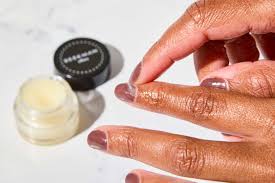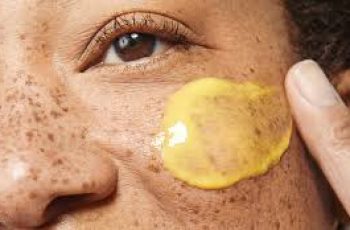
5 Dermatologist-Approved Alternatives to Cuticle Oil You Can Use Today
Cuticles are an often overlooked part of our hands, though they play an essential role in protecting the skin around our nails.
Many people only notice their cuticles when they become dry, cracked, or painful.
This dryness can arise due to several reasons, including environmental factors like cold weather, frequent hand washing, or exposure to UV light from nail dryers, says Dr. Anna Guanche, a board-certified dermatologist.
Additionally, certain medical conditions such as eczema or psoriasis may cause the cuticles to become inflamed or damaged, according to dermatologist Dr. Onyeka Obioha.
Cuticle oil has become the most popular and effective way to treat dry, irritated cuticles.
Dr. Rina Weimann, a board-certified dermatologist, explains that cuticle oils serve two main functions:
Hydrating the cuticles to keep them soft, and forming a protective barrier against further irritation from harsh chemicals or environmental factors.
But what if you don’t have cuticle oil readily available? Don’t worry.
We consulted these experts to identify some dermatologist-approved alternatives that can provide similar benefits and help maintain your nail health without needing a special bottle of cuticle oil.
Keep reading to discover five accessible and effective substitutes you can use to nourish your cuticles and keep your nails looking their best.
1. Vitamin E: A Versatile and Nourishing Option
Vitamin E is a common ingredient in many commercial cuticle oils, and it’s easy to understand why. Dr. Weimann highlights that vitamin E helps to soften and hydrate the cuticle area effectively.
Moreover, Dr. Obioha points out that vitamin E not only moisturizes but also promotes nail regeneration and strengthens the nails themselves, encouraging healthier growth over time.
One of the simplest ways to incorporate vitamin E is by using olive oil, which contains natural vitamin E and is something most people already have in their kitchens.
Vitamin E is also conveniently available in capsule form. You can easily break open these capsules and apply the oil directly to your cuticles, making it a handy option for on-the-go care.
Regular application can soothe dry, cracked cuticles and provide much-needed nourishment without the need for a specialized product.
2. Lanolin: The Moisture-Locking Emollient
Lanolin is a natural substance well-known for its ability to lock moisture into the skin.
Dr. Obioha praises lanolin for its emollient properties, which not only prevent dryness but also help promote smooth, healthy nail regrowth.
This makes lanolin an excellent choice for anyone experiencing brittle or damaged cuticles. It works by forming a protective layer on the skin, which helps to retain hydration for extended periods.
Beyond its benefits for nails, lanolin is also widely used in skincare for lips and even for soothing sore nipples during breastfeeding.
This versatility means that lanolin can serve multiple purposes in your personal care routine, making it a practical and multi-functional ingredient to keep around.
3. Avocado Oil: Rich in Healthy Fats
Avocado oil is another fantastic alternative that dermatologists recommend for treating dry cuticles.
Dr. Guanche appreciates avocado oil for its natural, organic qualities and its high content of monounsaturated fats.
These healthy fats are crucial for repairing and softening dry, damaged skin around the nails.
If you’re someone who prefers to use natural ingredients, avocado oil is a wonderful addition to your cuticle care routine.
A major advantage of avocado oil is its accessibility.
Since many people already keep it in their kitchens for cooking or salads, it can be an easy substitute without requiring you to purchase a special product.
According to Dr. Guanche, some people apply avocado oil every time they wash their hands to maintain cuticle hydration, but the frequency is really a personal choice.
Experiment to see what works best for you.
4. Coconut Oil: Hydrating and Anti-Inflammatory
Coconut oil has long been a staple in skincare and haircare, and it’s equally effective for your nails and cuticles.
Dr. Weimann highlights that coconut oil doesn’t just hydrate but also has anti-inflammatory properties that can calm skin irritation and reduce redness.
This is especially beneficial if your occupation involves frequent hand washing or exposure to chemicals, which can lead to dry, split cuticles.
People working as hairdressers, healthcare professionals, mechanics, or others who regularly clean their hands may find coconut oil particularly helpful.
It helps to restore the skin barrier and soothe inflammation caused by repeated exposure to irritants. Applying coconut oil to your cuticles can prevent damage and keep them looking healthy and polished.
5. Hyaluronic Acid: A Hydration Powerhouse
If you enjoy skincare products, you’re probably familiar with hyaluronic acid (HA) as a powerful moisturizer.
Dr. Obioha explains that hyaluronic acid is effective at drawing hydration into the cuticles and nails.
Unlike oils, HA is water-based, making it light and easy to apply without feeling greasy or heavy on the skin.
Hyaluronic acid is especially beneficial because it can be applied frequently without causing buildup.
Dr. Obioha recommends using it multiple times daily—up to three times or even after every hand wash—to maintain optimal hydration.
Because of its quick absorption and non-oily texture, HA is an excellent substitute for traditional cuticle oils, particularly for those who prefer lighter products.
Dry cuticles are more than just a cosmetic issue; they can be painful and make your hands appear less polished.
While cuticle oils are a great go-to for treating dry skin around your nails, the substitutes listed here offer accessible, dermatologist-approved alternatives that you may already have at home.
Vitamin E, lanolin, avocado oil, coconut oil, and hyaluronic acid all deliver essential hydration and nourishment to your cuticles, helping them stay healthy and strong.
By incorporating one or more of these alternatives into your routine, you can keep your cuticles moisturized and prevent painful cracks or peeling.
Many of these ingredients also promote healthier nail growth, meaning your nails will not only look better but become stronger over time.
Whether you prefer oils rich in natural fats or lighter, water-based serums, there’s an option here to fit your lifestyle and preferences.
So next time your cuticles feel dry and irritated but you’re out of cuticle oil, don’t panic.
Reach for one of these dermatologist-recommended substitutes and enjoy healthier, happier nails with just a few simple steps.
Consistency is key, and by giving your cuticles the care they deserve, you can maintain beautiful, well-groomed hands year-round.
DQH Knowledge drop: In your 20s, your skin cell turnover decreases. (Cell turnover is a key component in keeping your skin youthful.) You know what else slows down? Your collagen production. Starting in your 20s, collagen decreases by about 1 percent per year. Should you want to prevent fine lines and wrinkles, start by eliminating behaviors that contribute to premature aging. “If it’s bad for you, it’s bad for your skin,” says dermatologist Michel Somenek.
“Cigarette smoking reduces blood flow to the skin and causes premature wrinkling and a dull skin texture. Making the repeated pursed motion to inhale can also cause smoker’s lines. Alcohol and recreational drugs are toxins for the skin that damage its cellular structure and DNA,” Somenek tells us. “The faster you eliminate vices while you are young, the better chance your skin and body have to recuperate.” Also, adopting an anti-aging routine in your 20s is key. After all, the best offense is a good defense. We spoke to Somenek and experts Joshua Ross and Audrey Kunin to find out more.
Keep reading for the best anti-aging products for your 20s, according to skincare professionals.
Sunscreen
“We all know that the sun is the number one cause of skin aging and starting the prevention in your 20s is very important,” Ross says. “The majority of your sun damage won’t start to appear until you’re in your 30s, so don’t wait until you see it surface or you’ll be behind the curve. Stay ahead of it with a good-quality zinc-based sunscreen worn daily.”
Farmacy Green Defense Daily Mineral Sunscreen
An invisible sunscreen with SPF 30, plus botanical extracts meant to protect skin with tons of antioxidants. Bonus: It’s clean and fine to use under makeup.
Bareminerals Complexion Rescue™ Tinted Moisturizer Broad Spectrum SPF 30
Although we recommend you use your SPF and moisturizer separately, we also understand moments when you don’t have time or energy for that extra step. For those times, this bareMinerals moisturizer is a great thing to have on hand.
Vitamin C Serum
“A great introduction to anti-aging is to start with a vitamin C serum in your morning skincare routine,” Ross says. “It’s a powerful antioxidant that will neutralize free radicals and brighten the skin.” He adds that it’s a great way to counteract the effects of the sun’s harmful rays, which, as previously mentioned, are among the biggest causes of premature aging.
Drunk Elephant C-Firma™ Vitamin C Day Serum
The Drunk Elephant C-Firma is a lightweight serum that promises to give skin a glow by combining the brightening powers of vitamin C with ferulic acid, l-ascorbic acid, and vitamin E. The included sodium hyaluronate is meant to replace hydration loss, so you shouldn’t have to deal with any irritation.
Sunday Riley C.E.O. Rapid Flash Brightening Serum
This potent serum is jam-packed with vitamin C (15 percent, to be exact), which means it’s a potential superstar at both brightening skin and dousing it in antioxidants.
Peptides
Using peptides on your skin has many benefits, says Somenek. “The skin barrier is what defends the body against pollution, UV rays, bacteria, and toxins. It can be damaged by several everyday factors. Using topical peptides aids in building a stronger barrier,” he says. “Peptides comprise elastic fibers, which are a type of protein. These fibers help to make skin appear taut and firm. Peptides can also help repair damaged skin, relieve inflammation, and even out skin tone. Some peptides can kill acne-causing bacteria that is common in 20-somethings.”
Kunin agrees, saying, “Peptides are an excellent entry point for supporting collagen.” She recommends looking for face and eye treatments that contain these collagen-boosting powerhouses.
Charlotte Tilbury Magic Eye Rescue Cream
This Charlotte Tilbury super-emollient eye cream has a base of coconut oil and shea butter (read: it’s incredibly hydrating). Botanicals plus peptides are meant to help reduce dark circles and boost collagen, respectively.
This creamy moisturizer serves up potent collagen-boosting peptides and pycnogenol, and antioxidant-rich vitamin C. “Instead of sitting on top of the skin, peptides penetrate the outer layer so they go deep. The ‘signals’ they send tell the cells to produce elastin and collagen, which are needed for youthful-looking skin,” explains Somenek.
At-Home Peel Pads
Remember that skin cell turnover fiasco we talked about earlier? One way to help support it is by exfoliating. “Exfoliation is important to help keep skin fresh and luminous,” Kunin says. She recommends using at-home peel pads as an easy and effective way to exfoliate.
“The goal in your 20s is to fight the slowing pace of cell turnover. It is wise to use products that gently exfoliate, yet still remove oil and other impurities. Products that have Alpha Hydroxy Acids (AHA) or Beta Hydroxy Acids (BHA) are a good choice.”
According to Somenek, you should only exfoliate two to three times a week. “People of all ages are guilty of over-exfoliating and that can be too much of a good thing,” he says.
Dermadoctor Kakadu C Intensive Vitamin C Peel Pad
A few swipes of this Derma Doctor powerful peel pad promise to leave your skin glowing and smooth, thanks to the seven (yes, seven) types of chemical exfoliants, including AHA and BHA. It also contains vitamin C via Kakadu plum extract for added brightening and antioxidant protection.
KEY INGREDIENTS Kakadu plum extract is sourced from the Kakadu plum, a fruit grown in northern Australia. It contains vitamin C, which restores the skin’s natural barrier, increases collagen production, and soothes irritation.
Dr. Dennis Gross Skincare Alpha Beta® Universal Daily Peel Pads
These are the gold standard of peel pads, with a cult following and over 900 five-star reviews on Sephora. They’re easy to use and contain a blend of anti-aging exfoliating acids.
Emollient Night Cream
“In your 20s, you need to start upping the hydration in your skincare routine. You may have been cautious of over-moisturizing because of acne in your teens, but as you enter your 20s, your skin transitions and becomes drier,” Ross says. “I recommend an emollient night cream added into your evening skincare regimen.”
“Twenty-somethings need to make sure that they are not using creams that will clog their pores and cause excess oil production,” says Somenek. Opt for non-comedogenic products.
Cerave Skin Renewing Night Cream
One great choice is the CeraVe Skin Renewing Night Cream, which is a non-comedogenic night cream that leaves skin soft and glowy. It combines the moisturizing powers of ceramides and hyaluronic acid.
RoC Retinol Correxion Max Hydration Creme
“The best night cream ingredients contain retinol, benzoyl peroxide, and/or salicylic acid or hyaluronic acid. The goal is to moisturize, yet remove excess oil,” says Somenek. This Roc Retinol Correxion cream fits the bill as it contains both hyaluronic acid and retinol so it promises to moisturize while also being non-comedogenic.



